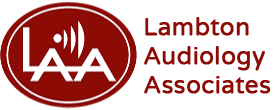
When most people think of hearing aids, they think of traditional devices that amplify sound through the ear canal. But for individuals with specific types of hearing loss, especially those dealing with persistent ear problems or single-sided deafness, a different type of technology could offer better clarity and comfort: bone conduction hearing devices.
How Bone Conduction Hearing Devices Work
Bone conduction hearing devices function by bypassing the outer and middle ear. Instead of transmitting sound through the air, they transfer vibrations through the bones of the head to the inner ear (cochlea), where the sound is processed. This means that even if the ear canal is blocked or damaged, sound can still get to the auditory nerve. Think of it like this: If you’ve ever stopped up your ears and still been able to hear your voice when talking, that’s bone conduction.
Bone Conduction vs. Conventional Hearing Aids
Conventional hearing aids boost sound and direct it through the ear canal. This works well for people with sensorineural hearing loss, where the inner ear or auditory nerve is damaged. On the other hand, if there are issues with the external or middle ear dued to infection, fluid accumulation, or structural problems, conventional hearing aids may not work efficiently or be comfortable. Bone conduction hearing devices are often a more effective alternative in such scenarios as they steer clear of the problematic areas and transmit sound directly to the cochlea.
Bone Conduction Candidates
Situations where bone conduction devices are appropriate:
- Conductive hearing loss, when sound has difficulty moving through the outer or middle ear at all.
- Persistent ear infections or issues with fluid drainage could be aggravated by traditional hearing aids.
- People with flawed ear canals or the absence of outer ears, who may not qualify for conventional devices.
- Single-sided deafness (SSD), where one ear has severe hearing loss or no hearing. These devices provide a non-intrusive option that is typically more comfortable, especially for individuals, both young and old, who experience recurring ear problems.
Implantable vs. Non-Implantable Solutions:
There are two principal categories of bone conduction choices: Implantable and non-implantable devices.
- External non-implantable devices are usually fastened with a headband, softband, or adhesive pad. They are excellent for children, those trying out bone conduction for the first time, or individuals who are not prepared for surgery.
- Surgically implanted devices consist of a tiny device inserted underneath the skin, which is connected to a separate sound processor worn outside the body. Long-term users typically find that they provide more robust and reliable results. A professional evaluation by an audiologist or ENT specialist will determine the most appropriate solution for you, considering your age, particular anatomy, and personal hearing objectives.
Key Advantages of Bone Conduction Hearing Devices
- Suitable for sensitive ears – does not necessitate insertion into the ear canal
- Clear sound quality, even with persistent ear problems
- Great for distinct anatomy– helpful for individuals born without a complete outer ear or with other structural variations
- Improved communication– particularly in school, work, or noisy settings
If you or your child copes with hearing in one or both ears, particularly as a result of persistent infections or conductive problems, bone conduction hearing devices could be worth exploring.
Make an appointment with an audiologist today to get more information.
Sources: https://www.dukehealth.org/treatments/ear-nose-and-throat/bone-conduction-hearing-aid https://www.hopkinsmedicine.org/health/treatment-tests-and-therapies/baha–the-implantable- hearing-device https://www.ndcs.org.uk/advice-and-support/all-advice-and-support-topics/hearing-aids- implants-and-assistive-technology/ hearing-aids-and-implants/ bone-conduction-devices https://my.clevelandclinic.org/health/treatments/14794-bone-anchored-auditory-implant
